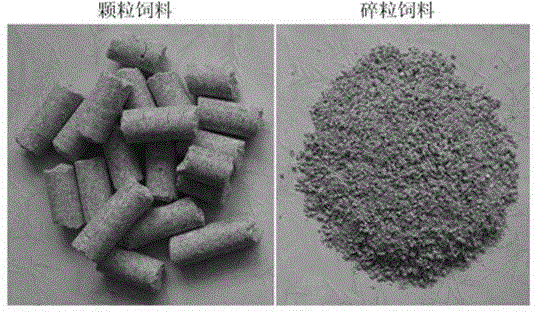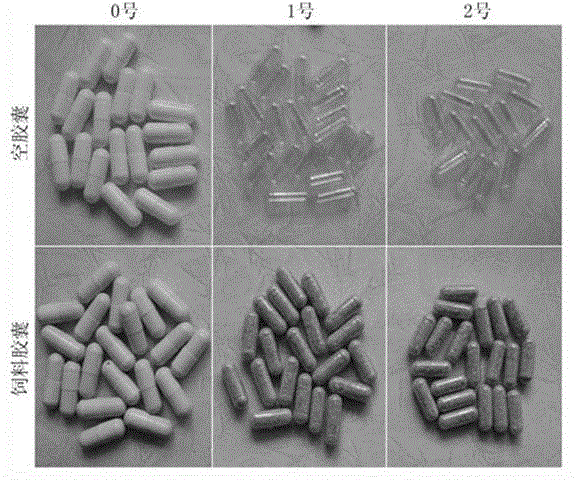Feed for laboratory rats and mice and preparation method thereof
A technology for experimental rats and feed, applied in animal feed, animal feed, molding or processing of animal feed, etc., can solve problems such as inactivation, difficulty in quantifying food intake of experimental mice, and difficulty in quantifying intake
- Summary
- Abstract
- Description
- Claims
- Application Information
AI Technical Summary
Problems solved by technology
Method used
Image
Examples
Embodiment 1
[0043] Take SPF grade female and male juvenile Wistar rats, 6 each, and raise them in a single cage. ① Feed the standard pellet feed (20g / animal), take out the remaining feed after 24 hours, and eat the feed powder that fell into the cage, weigh them separately, and calculate the daily amount of pellet feed consumed by the animal; ② Feed the animals with different specifications Capsule feed (15 capsules each of 0#, 1# and 2#), collect the remaining capsules after 24 hours, clear out the feed in the capsules, collect the powdered feed that fell into the cage, weigh them separately, and calculate the daily intake Amount of capsule feed.
[0044] The daily food intake of young female and male Wistar rats to capsule diet was greater than that of pellet diet ( P <0.01); the selectivity of rats to different specifications of capsule feed was equivalent; the amount of discarded feed during feeding was less than that of pellet feed.
Embodiment 2
[0046] Take 6 SPF grade female and 6 male adult Wistar rats respectively, and the implementation steps are the same as in Example 1.
[0047] Adult female and male Wistar rats had a slightly higher daily intake of capsule feed than pellet feed, and had similar selectivity to different specifications of capsule feed; the amount of discarded feed during feeding was less than that of pellet feed.
Embodiment 3
[0049] Get 6 SPF grade female and 6 male aged Wistar rats respectively, feed amount: pellet feed 40g / rat, capsule feed 0#, 1# and 2# capsules 25 / rat each. All the other steps are the same as in Embodiment 1.
[0050] The daily feed intake of aged female and male Wistar rats was slightly larger than that of pelleted feed, and their selectivity to capsules of different specifications was similar; the amount of discarded feed during feeding was less than that of pelleted feed.
PUM
| Property | Measurement | Unit |
|---|---|---|
| Particle size | aaaaa | aaaaa |
Abstract
Description
Claims
Application Information
 Login to View More
Login to View More - R&D
- Intellectual Property
- Life Sciences
- Materials
- Tech Scout
- Unparalleled Data Quality
- Higher Quality Content
- 60% Fewer Hallucinations
Browse by: Latest US Patents, China's latest patents, Technical Efficacy Thesaurus, Application Domain, Technology Topic, Popular Technical Reports.
© 2025 PatSnap. All rights reserved.Legal|Privacy policy|Modern Slavery Act Transparency Statement|Sitemap|About US| Contact US: help@patsnap.com



